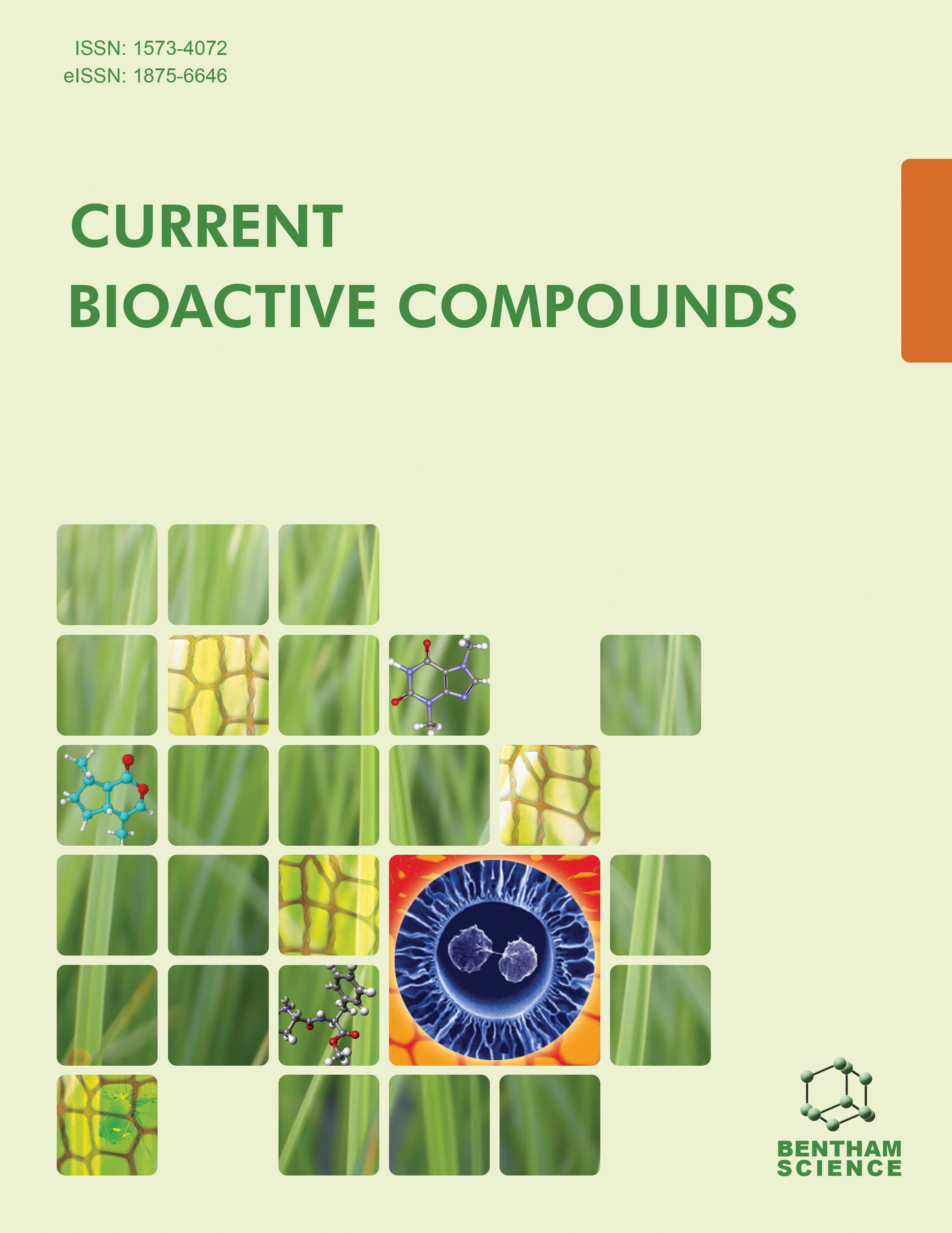- Home
- A-Z Publications
- Current Bioactive Compounds
- Previous Issues
- Volume 4, Issue 4, 2008
Current Bioactive Compounds - Volume 4, Issue 4, 2008
Volume 4, Issue 4, 2008
-
-
Editorial [Hot Topic: New Paradigms in Drug Formulation and Phytotherapeutics (Guest Editor: Shyam M. Rele)]
More LessDrug development has become increasingly complex, time consuming and expensive. As a result there is an increased focus on making clinically established drugs with enhanced therapeutic performance in terms of efficacy, safety and improved patient compliance. This has led to a paradigm shift not only in drug discovery programs but also in drug formulation technology. In this context, the present issue highlights some of th Read More
-
-
-
Reverse Pharmacology and Systems Approaches for Drug Discovery and Development
More LessAuthors: Bhushan Patwardhan, Ashok D.B. Vaidya, Mukund Chorghade and Swati P. JoshiWhile biotechnological advances, genomics and high throughput screenings or combinatorial and asymmetric syntheses have opened new vistas in drug discovery, the industry is facing a serious innovation deficit. Critics suggest that “we have become high throughput in technology, yet have remained low throughput in thinking”. Post marketing failures of blockbuster drugs have become major concerns of industries, leading t Read More
-
-
-
Amorphous Active Pharmaceutical Ingredients in Preclinical Studies: Preparation, Characterization, and Formulation
More LessAuthors: Karthik Nagapudi and Janan JonaA large number of the new pharmaceutical small molecules under development today are found to have poor water solubility. This in turn may lead to low bioavailability, which can have a significant impact on the development of the compound. Compounds with low bioavailability pose a greater challenge in early preclinical work involving animal studies, where obtaining maximum exposure is the primary goal especially in toxicol Read More
-
-
-
Natural Antiulcerogenic Agents: An Overview
More LessAuthors: B. Maity and S. ChattopadhyayExtensive use of certain drugs, changes in lifestyles and food habits, as well as stress factors in modern human lives have led to an exponential increase in the incidence of gastric ulceration. The ideal anti-ulcer drug with less side effects and recurrence, and affordability has so far remains elusive, providing avenues for innovation, especially with phytochemicals. This review furnishes extensive information on the earlier wor Read More
-
-
-
Mutagenic and Inhibitory Compounds Produced by Fungi Affect Detrimentally Diagnosis and Phylogenetic Analyses
More LessAuthors: Paterson R. R.M., Sariah M., Lima N., Zainal A. M.A. and Santos C.Microorganisms manufacture prolifically bioactive compounds. For example, fungi produce antibiotics and mycotoxins. However, many are difficult to identify and classify. Methods which rely on nucleic acid (DNA/RNA) are increasingly being used for this purpose where strains are grown in liquid or agar culture and often subjected to polymerase chain reaction (PCR) analyses. It has not been considered that self-produced mutage Read More
-
-
-
Optimizing Glycosylation Reaction Selectivities by Protecting Group Manipulation
More LessAuthors: Shino Manabe and Yukishige ItoDue to their biological importance, oligosaccharides and glycoconjugates have recently gained much attention. Investigations of such compounds often require chemically synthesized oligosaccharides. In the oligosaccharide synthesis, glycosylation reaction is frequently the most important step. Recently, one-pot multi-step glycosylations have become popular using the glycosyl donors with different reactivities and a polyme Read More
-
Volumes & issues
-
Volume 21 (2025)
-
Volume 20 (2024)
-
Volume 19 (2023)
-
Volume 18 (2022)
-
Volume 17 (2021)
-
Volume 16 (2020)
-
Volume 15 (2019)
-
Volume 14 (2018)
-
Volume 13 (2017)
-
Volume 12 (2016)
-
Volume 11 (2015)
-
Volume 10 (2014)
-
Volume 9 (2013)
-
Volume 8 (2012)
-
Volume 7 (2011)
-
Volume 6 (2010)
-
Volume 5 (2009)
-
Volume 4 (2008)
-
Volume 3 (2007)
-
Volume 2 (2006)
-
Volume 1 (2005)
Most Read This Month
Article
content/journals/cbc
Journal
10
5
false
en

Most Cited Most Cited RSS feed
-
-
Podophyllotoxin: Current Perspectives
Authors: Ying Qian Liu, Liu Yang and Xuan Tian
-
- More Less

